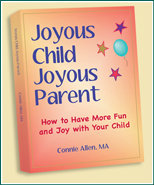The most important skill for every educator and parent is to be aware of what’s happening with a child emotionally and how he is perceiving and experiencing the world. This is not an exact science nor will it ever be. Yet it is a vital skill to bring out the best in a child.
Because we are all human, you look through your own interior filter, judging and evaluating what you see based on this filter. Your filter includes all the things you’ve learned and decided throughout your life until now.
This means if you believe children need constant guidance from you, you will only see evidence of this and will miss all the child’s actions where she is independent and does quite well without you.
Many people observe through a filter of looking for what’s wrong instead of for what’s right. Because of this, they frequently correct and try to improve their child’s behavior.
Or perhaps you believe that a child who yells is angry, aggressive or mean. You will miss or even misjudge all the times a child is loud because he is passionate and caring deeply about something.
Here are some tips to help you observe outside your usual filters.
1. Mentally step back from your child or the situation. This is simply an internal adjustment that you can make whenever you find yourself too emotionally involved in an interaction or concern. Imagine stepping back to get a wider perspective, like putting a wide-angle lens on your camera.
2. Turn off your ‘right – wrong’ and ‘good – bad’ filters. You want to be a neutral observer, not the prosecutor, judge, and jury. Finding a neutral perspective allows you to see more clearly and to make effective choices.
3. Set aside time every day to observe, to stand back and see what you can see with the intention to discover something new. I suggest you choose a specific time or person or whatever feels best to you.
4. Imagine you are a detective or an explorer in an unknown land. Then you’ll have lots more fun with observation and your discoveries will literally magnify.
By making neutral observation a daily priority, you’ll be thrilled with what you discover about yourself and the children in your life. With this newfound information and awareness, relating with your child will become easier and lots more fun!


 Just a little bit about me -- I'm a coach for parents, visionary guide, insightful trainer, and powerful consultant.
Just a little bit about me -- I'm a coach for parents, visionary guide, insightful trainer, and powerful consultant.